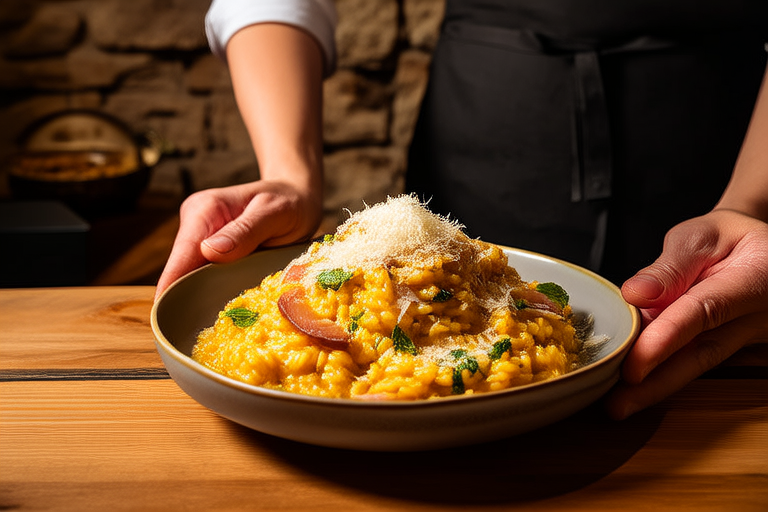Savoring the World: How Travel Enriches Your Palate

Savoring the World: How Travel Enriches Your Palate
Travel is often associated with the discovery of new landscapes, cultures, and experiences. However, one of the most profound ways travel enriches our lives is through the exploration of diverse culinary traditions. By venturing beyond our familiar tastes, we open ourselves to a world of flavors, textures, and aromas that challenge our palates and expand our culinary horizons.
Exploring New Flavors: A Journey Beyond Familiar Tastes
The first bite of a dish from an unfamiliar cuisine can be a revelation, offering a window into the unique culinary heritage of a distant place. Imagine biting into a perfectly ripe mango in Thailand, its sweetness bursting in your mouth, or sipping a fragrant cup of Turkish coffee, its robust flavor lingering on your tongue. These moments of culinary discovery are not just about taste; they engage all the senses, from the visual appeal of colorful spices to the tactile sensation of freshly baked bread.
Each region has its own distinct approach to cooking, shaped by geography, history, and tradition. In Italy, for example, pasta is prepared in countless variations, each reflecting the local ingredients and culinary preferences. From the delicate tagliatelle al ragù in Bologna to the hearty pappardelle with wild boar in Tuscany, Italian pasta dishes showcase the country’s rich culinary diversity. Similarly, the coastal regions of Vietnam offer a bounty of seafood, often prepared in light, fresh styles like spring rolls or fish soups, while inland areas focus on heartier dishes featuring rice and meat.
Spices play a crucial role in shaping the distinctive flavors of global cuisines. Indian cuisine, for instance, relies heavily on a complex blend of spices such as turmeric, cumin, coriander, and cardamom, creating a symphony of flavors that can range from mildly sweet to intensely spicy. In contrast, the bold, smoky flavors of Mexican food are achieved through the use of chili peppers, garlic, and lime, while Japanese cooking emphasizes the natural flavors of fresh ingredients, often enhanced by subtle seasonings like soy sauce and wasabi.
Cultural Significance: Understanding the Heart of Food
Traveling provides more than just an opportunity to taste new foods; it offers a deeper understanding of the cultural significance behind these dishes. Food is often intertwined with a community’s identity, history, and values, and by engaging with local culinary traditions, travelers gain insight into the fabric of a place. For instance, visiting a bustling market in Marrakech reveals not only the vibrant array of fruits, vegetables, and spices but also the daily rhythms of the city, where generations have come together to shop and socialize.
Street food is particularly revealing, offering a glimpse into the informal yet vital aspects of a culture. In Mexico City, tacos al pastor, skewers of marinated pork cooked on a vertical spit, are a beloved street food, representing the fusion of Lebanese and Mexican culinary traditions. In Bangkok, the aroma of grilled meats and fresh herbs wafts from street vendors, inviting passersby to indulge in a quick, flavorful meal. These casual dining experiences allow travelers to connect with locals and learn about the food’s role in everyday life.
Traditional dining experiences also provide valuable insights. In Japan, a tea ceremony is more than just a ritual; it is a meditative practice that celebrates the beauty of simplicity and mindfulness. Similarly, a dinner at a family-owned restaurant in rural Spain may involve several courses, each designed to highlight seasonal ingredients and regional specialties. These shared meals create meaningful connections between guests and hosts, fostering a sense of belonging and mutual respect.
Returning Home: Culinary Creativity and Inspiration
Traveling not only broadens our palates but also inspires us to bring new flavors and ideas back home. Returning to familiar kitchens, many travelers find themselves eager to recreate dishes they tasted abroad or to experiment with new ingredients and techniques. This culinary creativity can lead to exciting transformations in our everyday meals, making them more adventurous and diverse.
To integrate these new culinary discoveries into everyday life, it’s important to start small. Incorporating a few new spices or herbs into your cooking can add depth and complexity to familiar dishes. For example, adding a pinch of sumac, a tangy Middle Eastern spice, to salads or marinades can bring a burst of unexpected flavor. Alternatively, experimenting with cooking methods learned during travels, such as grilling or steaming, can enhance the texture and taste of ingredients.
Another way to stay inspired is by hosting themed dinners that celebrate the cuisines of different countries. These events not only provide an opportunity to share your culinary adventures with friends and family but also encourage others to appreciate the richness of global flavors. You could organize a Moroccan night with tagines and couscous, or a Thai feast featuring curries and stir-fries. Such gatherings can spark new conversations and connections, deepening everyone’s appreciation for the world’s culinary tapestry.
The Transformative Power of Culinary Exploration
The journey of savoring the world through food is not merely about indulging in delicious meals; it is a transformative experience that enriches our lives in profound ways. By stepping outside our comfort zones and embracing unfamiliar flavors, we broaden our perspectives and deepen our understanding of different cultures. Each bite tells a story, connecting us to the people, places, and histories that shape our global community.
Embrace the adventure of trying unfamiliar foods as part of your travel experiences. Whether you’re exploring a bustling street market in Bangkok or enjoying a quiet afternoon tea in Kyoto, every culinary encounter offers an opportunity for growth and discovery. Let your palate be your guide as you savor the world, one dish at a time.